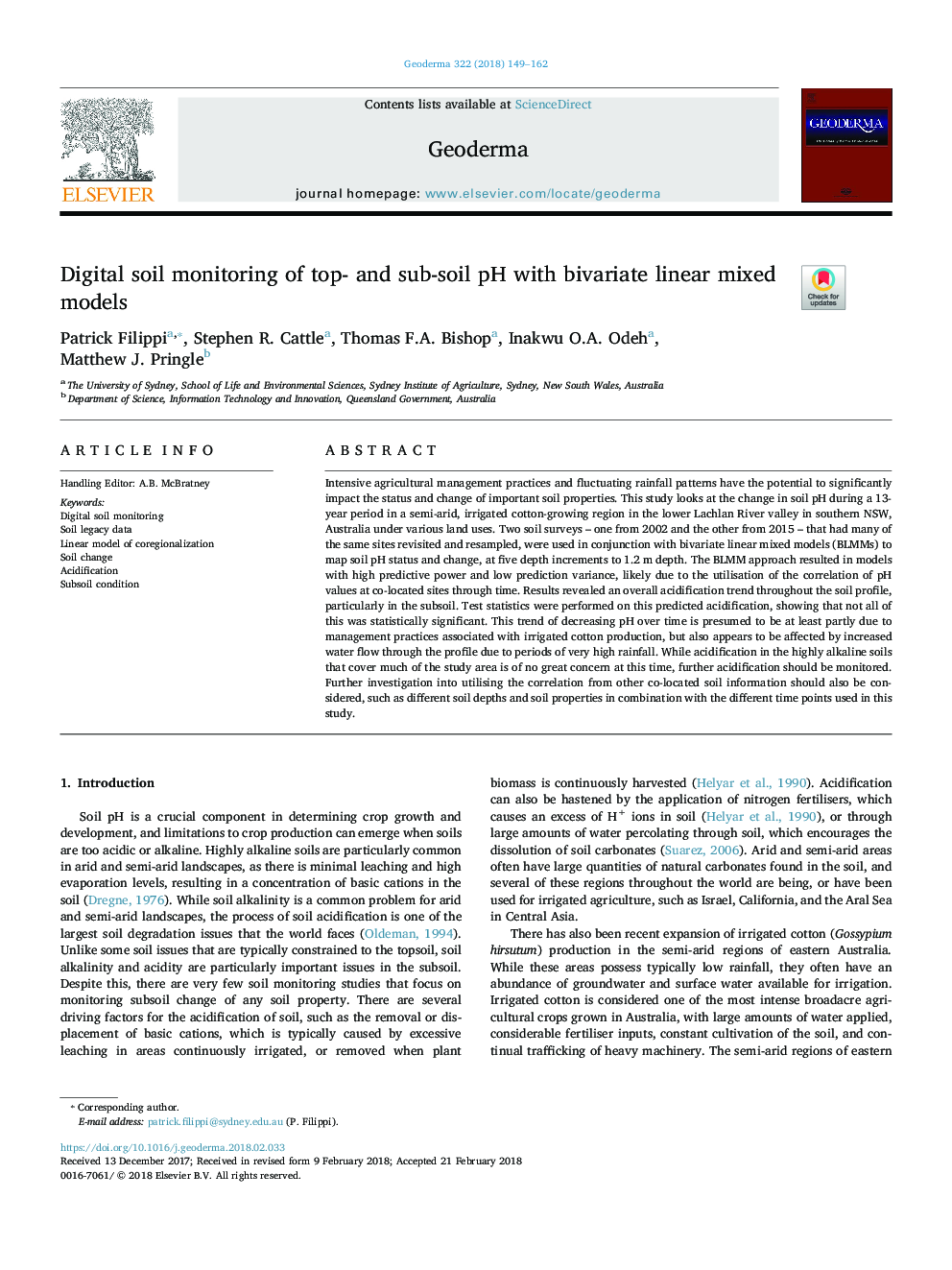| Article ID | Journal | Published Year | Pages | File Type |
|---|---|---|---|---|
| 8894079 | Geoderma | 2018 | 14 Pages |
Abstract
Intensive agricultural management practices and fluctuating rainfall patterns have the potential to significantly impact the status and change of important soil properties. This study looks at the change in soil pH during a 13-year period in a semi-arid, irrigated cotton-growing region in the lower Lachlan River valley in southern NSW, Australia under various land uses. Two soil surveys - one from 2002 and the other from 2015 - that had many of the same sites revisited and resampled, were used in conjunction with bivariate linear mixed models (BLMMs) to map soil pH status and change, at five depth increments to 1.2â¯m depth. The BLMM approach resulted in models with high predictive power and low prediction variance, likely due to the utilisation of the correlation of pH values at co-located sites through time. Results revealed an overall acidification trend throughout the soil profile, particularly in the subsoil. Test statistics were performed on this predicted acidification, showing that not all of this was statistically significant. This trend of decreasing pH over time is presumed to be at least partly due to management practices associated with irrigated cotton production, but also appears to be affected by increased water flow through the profile due to periods of very high rainfall. While acidification in the highly alkaline soils that cover much of the study area is of no great concern at this time, further acidification should be monitored. Further investigation into utilising the correlation from other co-located soil information should also be considered, such as different soil depths and soil properties in combination with the different time points used in this study.
Related Topics
Physical Sciences and Engineering
Earth and Planetary Sciences
Earth-Surface Processes
Authors
Patrick Filippi, Stephen R. Cattle, Thomas F.A. Bishop, Inakwu O.A. Odeh, Matthew J. Pringle,
